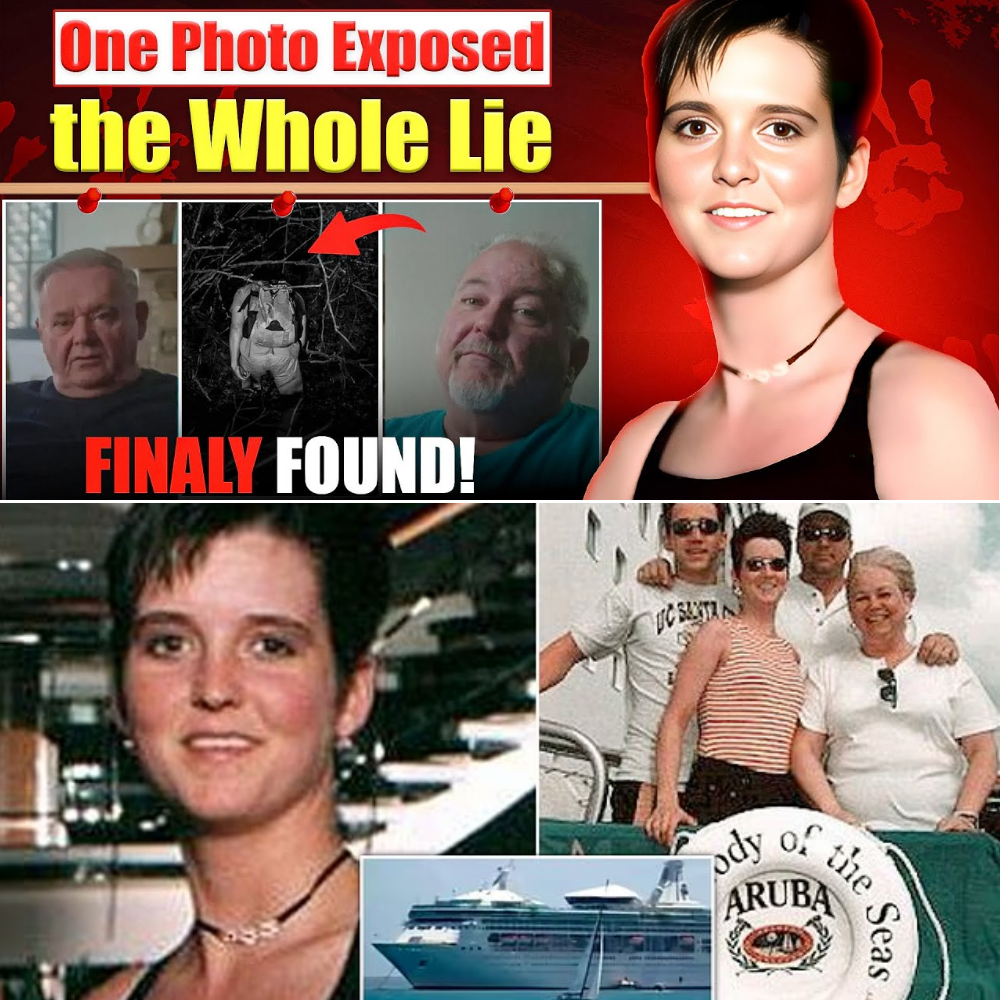
The vast, indifferent ocean that swallowed Amy Lynn Bradley whole in 1998 has long been a symbol of unresolved grief for her family. But on the heels of a gripping Netflix docuseries that reignited global fascination, the FBI is mounting its most aggressive pursuit in decades for the Virginia woman who vanished from a Royal Caribbean cruise ship. After 27 years of stalled leads, cryptic sightings, and heartbreaking dead ends, three “very significant” new clues—emerging from hundreds of tips funneled through the July 2025 release of Amy Bradley Is Missing—have thrust the case back into active status. Investigators now believe Amy, who would be 51, may still be alive, possibly entangled in a web of human trafficking across the Caribbean. With a fresh agent assigned and private detectives scouring Curaçao, the renewed effort isn’t just hope—it’s a calculated bid to shatter the silence that has haunted the Bradleys for nearly three decades.
Amy’s disappearance remains one of the most perplexing maritime mysteries in modern history. On March 24, 1998, the 23-year-old recent college graduate was enjoying a family vacation aboard the Rhapsody of the Seas, en route from Puerto Rico to Curaçao. A vivacious redhead with a penchant for basketball and a tattoo of a Tasmanian Devil spinning a hoop on her shoulder, Amy embodied the promise of young adulthood. That night, after a boozy evening of dancing and drinks in the ship’s disco, she retreated to her state room on the 10th deck balcony to catch some air. Her brother Brad, asleep inside, woke around 5:30 a.m. to find her gone—her cigarettes and lighter left behind on the balcony table, the sliding door ajar. The family scoured the ship in panic; crew members launched a frantic search. But by morning, Amy had evaporated into thin air, leaving behind a void that no amount of exhaustive inquiries could fill.
Initial theories ranged from accidental overboard to suicide, but the Bradleys—parents Ron and Iva, and brother Brad—dismissed them outright. “Amy wasn’t depressed; she was excited about life,” Iva Bradley told Dateline in a 2010 interview, her voice steady despite the ache. The FBI quickly pivoted to foul play, suspecting abduction amid whispers of sex trafficking rings preying on cruise passengers. A band member named Alister Douglas, who had flirted with Amy at the disco, raised eyebrows when he approached Brad the next day with condolences—before any public announcement. Douglas passed a polygraph, but suspicions lingered. Over the years, the case spawned tabloid frenzy: grainy 2005 photos from a Curaçao escort site showing a woman resembling Amy, dubbed “Jas,” with her distinctive tattoos; alleged sightings in brothels from Aruba to Barbados; even a 2008 tip from a U.S. Navy sailor claiming he rescued a drugged woman matching her description from sex workers in a hotel. None panned out, and by 2010, Amy was declared legally dead. The family, undeterred, poured their life savings into private probes, offering a $250,000 reward for her safe return.
The drought ended with Netflix’s Amy Bradley Is Missing, a three-part powerhouse directed by Ari Mark and Phil Lott that debuted on July 16, 2025. Featuring raw interviews with the Bradleys, archival footage of the cruise, and expert dissections of trafficking networks, the series rocketed to Netflix’s Top 10 for four weeks, amassing over 50 million views. It wasn’t mere entertainment; it was a catalyst. “The docuseries flooded us with hundreds of tips—people who watched and suddenly remembered something from 27 years ago,” said a source close to the production, speaking exclusively to The Hollywood Reporter in October 2025. The FBI, which had classified the case as cold, responded by assigning a dedicated agent and coordinating with international partners. Private investigators hired by the family decamped to Curaçao in November 2024, chasing a lead that predated the series but gained fresh traction. By October 2025, three breakthroughs had coalesced, each chipping away at the wall of doubt.
The first lead harks back to the ship itself, courtesy of a female bartender who served drinks in the disco that fateful night. Coming forward post-documentary, she recounted hearing panicked shouts of “Señorita kidnapped! Señorita kidnapped!” echoing through the crew corridors around 3 a.m.—hours before Amy was reported missing. The bartender, whose limited English at the time caused her to dismiss the cries as a drunken prank, vanished from the ship days later without a full interview. “This aligns with other suppressed witness accounts,” explained forensic psychologist Dr. Sarah Kline in the series, noting how cruise lines often prioritize reputation over transparency. The FBI is now cross-referencing crew manifests and immigration records from 1998, hoping to locate her for a formal statement. If corroborated, it could rewrite the timeline, suggesting Amy was targeted and removed via a prearranged hatch or lifeboat—far from the “accidental fall” narrative peddled early on.
Lead two builds on a digital ghost from the past: suspicious IP activity traced to a boat anchored off Barbados mere months after Amy’s vanishing. In 1998, rudimentary online sleuths flagged logins to obscure forums from an address linked to a vessel known for smuggling migrants—and women—across the Caribbean. The tip resurfaced in the tip deluge, prompting FBI cyber forensics to deploy advanced tracing tools unavailable in the ’90s. “We’re talking breadcrumbs that lead to a network of traffickers operating out of Curaçao ports,” the production source revealed. This isn’t speculation; it’s actionable data, corroborated by Interpol’s maritime database. Investigators believe it ties into the 2005 “Jas” photos, where facial recognition software pegged a 95% match to Amy’s features, including her gecko tattoo near her navel. The images, pulled from a now-defunct escort site, depicted a woman who appeared “distraught and despondent,” per FBI agent Erin Sheridan in a 2008 statement. Though the original IP dead-ended, the Barbados link offers a revival, potentially unlocking encrypted server logs that could name accomplices.
The most explosive clue, however, whispers of legacy: evidence that Amy may have given birth to a child while in captivity. A viewer tip, vetted by private investigator Javier Valentin, points to a 1999 missing persons report filed in a Curaçao clinic by a woman matching Amy’s post-trafficking description—desperate, tattooed, and seeking prenatal care under duress. “If we can identify this potential offspring through DNA and genetic genealogy, it could crack the case wide open,” Valentin told Fox News in late October 2025. Modern tools like those used in the Golden State Killer case make this feasible; ancestry databases have identified long-lost relatives in trafficking survivals before. The Bradleys, who have clung to the belief Amy survived, see this as vindication. “A child would mean she fought to live,” Brad Bradley said in an August 2025 update on The Tab, his voice thick with emotion. The family has upped their reward to $300,000, bolstered by a $1 million pledge from podcaster Ethan Klein on his H3 show in July 2025.
These leads converge on Curaçao, a sun-drenched island with a dark underbelly of sex tourism and lax enforcement. The third pillar: a “verified” sighting from 2016 by Herman Goilo, a retired Curaçao police officer. Goilo claims he encountered Amy in a Willemstad brothel, recognizing her tattoos and American accent amid a group of coerced women. “She looked broken, but it was her,” he insisted during a November 2024 interview with the family’s PIs. This eclipses prior reports—like a 2005 casino spot by a Purple Heart vet or 2010 calls from a Florida pimp—thanks to Goilo’s credentials and specificity. He even named associates in the trafficking ring, now under FBI scrutiny. Curaçao authorities, once criticized for foot-dragging, are cooperating via a U.S.-Netherlands treaty, raiding suspected sites as of October 2025.
The revival underscores broader failures in cruise industry accountability. Royal Caribbean settled a $6 million wrongful death suit with the Bradleys in 2000, but critics argue it stifled deeper probes. “Ships are floating black holes for investigations,” notes maritime lawyer Michael Winkleman, who represented a similar case. Human trafficking experts estimate 25 million victims worldwide, with cruises a notorious vector—isolated, international waters complicating jurisdiction. Amy’s tattoos, once a party trick, now serve as her unintended beacon; the FBI’s poster, updated with an age-progressed sketch, circulates anew.
For the Bradleys, now in their 70s and 50s, this surge is bittersweet. Iva, who once dreamed of Amy’s wedding, now envisions a reunion with a grown niece or nephew. “We’ve waited 27 years; we’ll wait 27 more if needed,” Ron said at a Virginia vigil in September 2025. Yet, the leads’ fragility weighs heavy—tips can evaporate, witnesses recant. The FBI urges: Contact tips.fbi.gov or local offices; anonymity assured, up to $25,000 reward for breakthroughs.
As agents fan out across the Caribbean, Amy’s story transcends one family. It’s a clarion against the shadows of the sea, where young dreams dissolve into waves. Three leads after 27 years: not closure, but a crack in the hull. Will they flood the truth to the surface? The ocean holds its breath.


